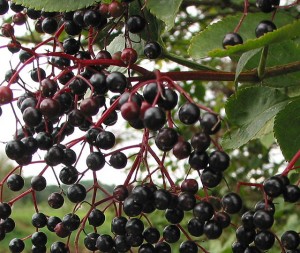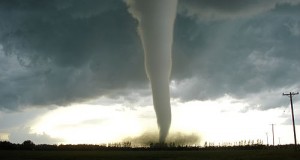In the wild, the ability to trap, hunt, or fish with the items you have with you is an excellent tool to have in your belt, but in the most extreme situations, by chance or by (inadvertent) choice, you may not have the necessary items with you to make this happen (namely a knife, cord, hooks, fishing line, etc.). Personally, your choice should never be to be found without a significant amount of survival equipment and knowledge, but it can happen, especially when you are impacted by others in a survival situation.
 Edible plants exist everywhere, but remember that in an extended survival situation, the total caloric value of plants may not be enough to keep you alive; similarly, the minimal caloric impact may be only of negligible benefit to you in an acute survival scenario. What this statement means is two specific things.
Edible plants exist everywhere, but remember that in an extended survival situation, the total caloric value of plants may not be enough to keep you alive; similarly, the minimal caloric impact may be only of negligible benefit to you in an acute survival scenario. What this statement means is two specific things.
- Choose wisely the edibles you ingest, as they may be more harmful than good.
- Know how to create a portfolio of edibles to ensure that you always have a choice and enough to maintain your energy levels.
That being said, there are thousands of choices in the wilderness and in your own backyard when considering the wild as a restaurant. In an extreme survival situation, knowing what cannot hurt you is more important than just about anything else, but bear in mind that food is an ancillary concern and should be contemplated AFTER shelter, fire, water, and protection have been established.
Food, more than anything, needs to be regarded as a secondary concern in an acute survival situation. If you are following the basics covered in the previous articles in this series (specifically about planning, preparation and communication), you are more likely to be rescued before you have an actual physiological need for food. Thinking ahead is vastly easier than identifying food in the wild; preparing so that you have items that can help you eat from other sources is also as easy as foraging for edibles in the wild, so please exercise a healthy dose of perspective when reading these articles. Without doubt though, edibles in the wild can be very important, especially for your peace of mind during a time of (perceived and real) vulnerability, like that faced in a survival condition.
Some excellent wild edibles both in a sustained survival situation and a homesteading or self-sufficiency situation are as follows:
Sego Lily: This is a bulb-based flower (specifically from a species called the Calochortus) native to the mid-western and southwestern states including the Dakotas, Wyoming, Montana, Idaho, Nebraska, New Mexico, Arizona, Nevada, Colorado and Utah, where it grows in abundance. Each lily stalk usually has two to four flowers, though it isn’t out of the question for it to have a singular flower. Each flower has three soft white petals with a sunburst at the base of each petal (starting as a pale yellow color and moving out as rings of magenta and deep purple, with a brighter yellow color in between). Early summer will showcase these blooms. The different parts of the sego lily can be cooked for a heartier experience, and most are relatively mild in taste compared to the usual bitterness experienced by wild flower eaters.
Day Lily: A derivative of day lilies (Golden Needles) is sold almost as a staple in Chinese food stores and restaurants. These flowers can grow in hardiness zones of 1-11, which makes it a decent flower for just about anywhere in the United States (and really just about anywhere where the temperatures aren’t consistently below -65 degrees Fahrenheit). Wisconsin and a few other northern states have a good amount of these perennials. All parts are edible as well.
Lambs Quarters: While this “weed” was actually cultivated for commercial usage at one time, it is currently a wild-growing native to every state in the U.S. (with the exception of Hawaii, which has virtually none) and is also present in Canada and northern Mexico. It has three varieties, all of which are edible in these areas. The most easily identifiable and usable is the Quelite version, which produces leaves similar in taste and look to that of spinach. Other varieties offer more abundant upper plant treats that are similar to quinoa and even broccoli, depending on the variety. It is recognizable by its smaller, uniformly shaped leaves with larger serrations on the edges; its seeds, which grow up towards the top of the plant, have a honeycomb-like fascia in their presentation.
Bamboo: Young bamboo shoots are entirely edible, but they carry with them the risk of poisoning if not worked with properly. The level of cyanide in bamboo (of all types) is substantially similar to that of cassava, a well known edible which can cause sickness and death if not prepared properly. Shoots should be properly boiled for up to two hours to remove the cyanide compounds, although twenty-five minutes will be enough to remove 80 percent or so of the deadly poisons. It is not likely that you will die from eating a boiled bamboo shoot, even if you boil it for a nominal amount of time, but the long-term effects can be very harmful. Exercise caution: Just because you can buy them in a supermarket doesn’t mean that you can eat them in the field without some safety guidelines.
Wild Asparagus: Abundant in most of Europe, Canada, and the Middle East, the plant is available just about everywhere in some form. The plant looks like a large vine that resembles a mix between a tumble weed and a dill sprig, in that the plant tends to grow as a circular rounded heap and the leaves look like giant dill sprigs with more space between each leaf. The fruit (berries) are poisonous to humans if eaten in quantity, and only the green, non-woody parts should be eaten from the plant.
Cattails: Cattail shoots are like a leek, except with a milder flavor and a softer texture, but they are just one part of the edible cattail. Bear in mind that you don’t want to eat the cottony head of a fully matured cattail (although they are suitable for use as an insulator in between layers of clothing to catch heat escaping your body—just make sure they do not have contact with skin, as a reaction can happen, causing a very uncomfortable rash). You will want to peel away the outer leaf layers to access the inner shoot, and it can be eaten raw or cooked. The layers seem to excrete a gel much like an aloe vera plant, which has traditionally been used to cover abrasions. The heads of the flowers before the tip turns brown can contain a very mild, starchy substance that is edible and resembles corn in taste and texture.
Stinging Nettle: These plants are recognizable by their tall stalk-like stems, jagged leaves that have a unidirectional broad face, and the soft, tiny, hanging flowers that are separate from the leaves. Be careful not to confuse stinging nettle with other plants—its most distinguishable feature is the stem, which carries hair-like “thorns” that are thin and annoying. Boiling the plant will yield a flavor similar to spinach and a protein level that is actually substantial. They are almost rampant in low-lying swampy or wetland areas.
Mesquite Beans: Many survival and foraging sources list this among their favorite wild edibles, but if you have ever tried to open a mesquite bean pod, you will quickly realize that some things aren’t meant for an acute situation, and by the time you can devise a proper tool to harvest this food source, you will likely have been rescued or have died from causes other than hunger. Avoid the hype about this protein source in a wilderness situation, and keep it in mind only for home harvesting during foraging expeditions.
Chestnuts: Horse chestnuts are poisonous to humans and should be avoided. They can be recognized as having a paper-like covering and being larger than normal edible chestnuts (without the spiny covering). Water chestnuts are edible and are contained within a green and yellow and brown “shell,” but they only grow in a few eastern states and a few southern Gulf Coast states. If you are in an area that has these edibles, a few minutes of searching or asking questions of wilderness experts will yield a result for you.
Pine Nuts: Contained within the pinecone, these “seeds” will come out when shaken violently or by deconstructing the pinecone (although the resinous sap contained within the cone will be difficult, if not impossible, to remove from your hands, so plan accordingly). A rock will need to be used to “shell” the nuts, and it will likely be a bit before you can reliably open a seed and extract a usable portion of nut.
Prickly Pear Cactus: This is a very edible plant in general, as the “cactus apples” (the “prickly pear”) as well as the broad leaves of the cactus are both edible and contain a large amount of fluid within them. Try to avoid getting stuck to minimize reaction, and if in doubt about your tolerance for the flesh, try a bit at a time and boil it for optimum results. Eaten raw, just about any wild edible is more likely to make you sick, regardless of the type of plant.
Carob: While not necessarily native in the U.S. and mostly found in great numbers in southern Europe, northern Africa, and the entire Mediterranean, the carob tree has served as a valuable food source for thousands of years, especially as a sweetener. Animals tend to eat the seeds (difficult for humans to consume), whereas human usage generally includes only the softer internal pod structure.
Elderberry: The purplish stalks are similar in structure to a grape vine; however, it is the cranberry-like look of an elderberry (except that elderberries are black/deep purple) and the distinctive symmetrical flowers (small with five flat petals on each) are most helpful in identification of the plant. Twigs, leaves, and the stalk can all be poisonous, as can the green berries. Cooking the elderberry is the safest way to eat the plant, and this should be done if possible, even if only eating ripe berries (which are semi-firm and dark purple/black, with a tip at the end of the berry that shows the scar of a flower which once resided there).
The most important thing for you to remember is that any plant can have adverse effects on the body, and any of them can individually be toxic or cause negative reactions in certain people. Knowing what not to eat is as important as knowing what to eat, and knowing the area that you are going to well in advance of your trip will only serve to enhance your general survivability and comfort levels. Identification is key to the successful usage of plants in a “survival” situation.
All plants can cause problems if you have an allergic reaction or ingest too many of them, as a general rule of thumb. Be careful to cook what seems suspect as long as you can (by boiling) and discard the water. Be slow in your ingestion, looking for signs of concern. Know your plant, and if in doubt, remember that you will be able to live for three minutes without air, three hours without protection from exposure, three days without water, and three weeks without food! So don’t risk death to satisfy your hunger. When you are sure that you have found a reliable and sufficient source of foods from edible wild plants, you can start eating, but maintain your intake. You do not want to inadvertently fool your body into causing other concerns, like not allowing your body to go into a fasting mode for survival.
Furthermore, while this is part of an “Extreme Survival” article series, it is the author’s intention for this to serve as a general knowledge piece rather than a survival guide for acute situations. The importance of food in a survival scenario only becomes paramount if you have led with bad planning or preparation. If you anticipate the need for sustained energy in a long hike out of a large and hard to traverse location, then this food knowledge maybe able to sustain you long enough to keep you alive and help you find safety. If you find yourself in a situation that requires a longer-term approach to survival, like an injury, poor planning, or a mistake in execution, you should consider this series of articles to supplement your existing base of knowledge and practice.
A final note: The information presented in this article is for educational purposes only—not for identification purposes when out in the wilderness. Additional information should always be sought from experts in the field before ingesting any wild plants.
©2011 Off the Grid News
 Off The Grid News Better Ideas For Off The Grid Living
Off The Grid News Better Ideas For Off The Grid Living



